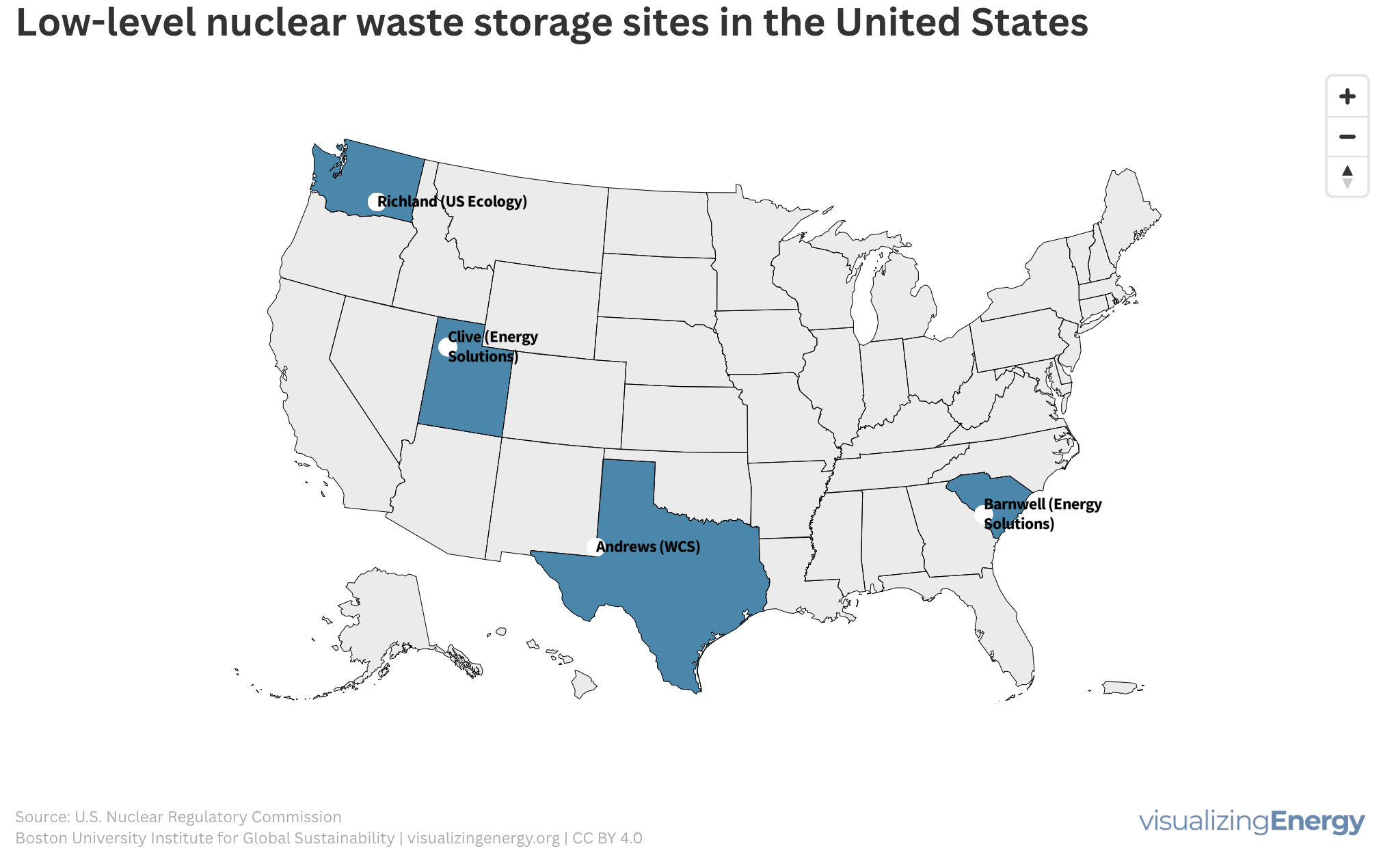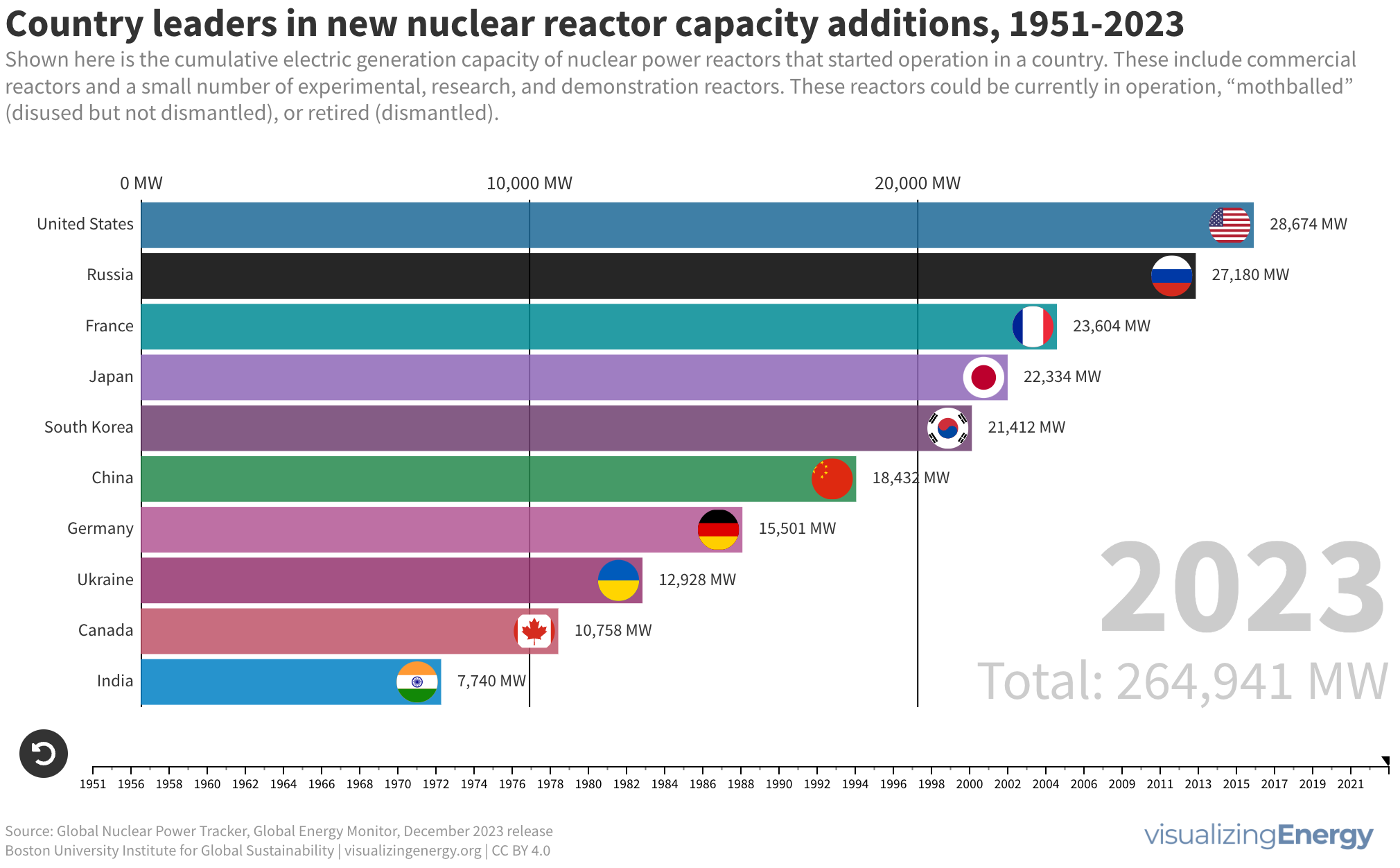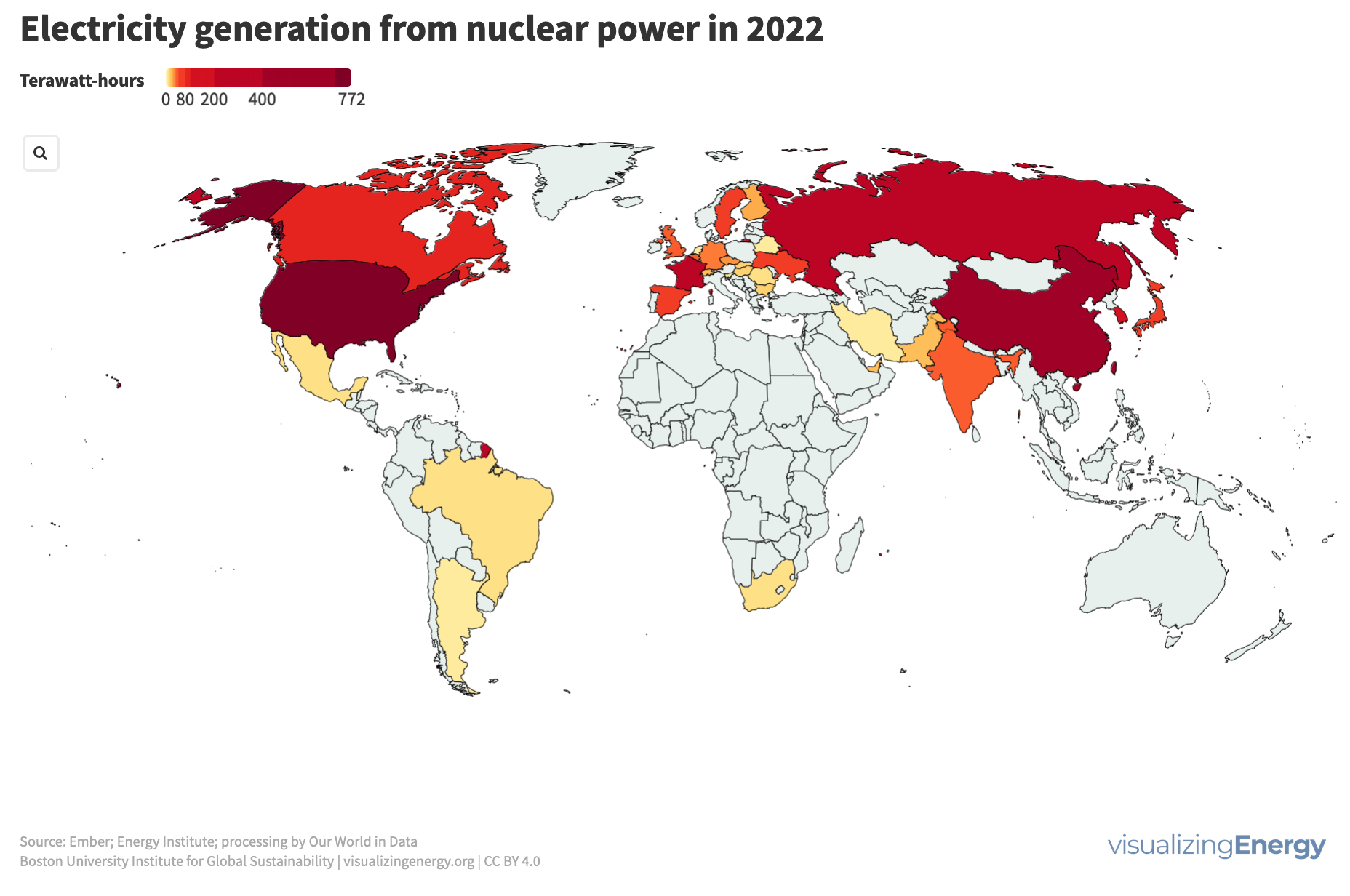Nuclear research reactors
Nuclear research reactors do not generate electricity. Instead, they produce neutrons primarily for research, radioisotope production, and nuclear education and training. Since 1942, about 884
Nuclear power provides large amounts of low-carbon electricity and could play a role in meeting rising demand from data centers, AI, and deep electrification. Its future, however, depends on addressing challenges around cost, safety, and waste.
Nuclear research reactors do not generate electricity. Instead, they produce neutrons primarily for research, radioisotope production, and nuclear education and training. Since 1942, about 884

Low-level radioactive waste (LLW) is produced by various commercial operations and the U.S. Department of Energy. It includes contaminated materials like clothes, tools, and medical supplies. LLW is typically stored on-site until it decays or is shipped to disposal sites, regulated under the Low-Level Radioactive Waste Policy Act of 1980.

Nuclear power plants have a nameplate capacity of about 390 gigawatts and supply 10% of the world’s electricity. The United States, Russia, France, Japan, South Korea, and China account for 36% of global capacity. Capacity additions have declined due to accidents, rising costs, public opposition, and the increasing attractiveness of renewable power generation.

In 2024, 440 nuclear power reactors operated in 32 countries, generating 10% of the world’s electricity. The US, China, France, Russia, and South Korea are the top generators. France leads in nuclear power usage (63%), followed by Slovakia, Hungary, Belgium, and Slovenia. Ukraine’s nuclear operations were impacted by the 2022 Russian invasion, causing fluctuating reactor activity.

The global nuclear power industry has experienced significant shifts since its post-WWII expansion, with a sharp decline in new reactor starts from the 1990s onwards. More recently, some countries have sought to replace fossil fuels with nuclear power to address emissions and energy security. However, challenges remain in demonstrating the promised benefits of new reactor designs.
© 2024 VisualizingEnergy. All Rights Reserved
License: Unless otherwise noted, all visualizations, data, and stories produced by Visualizing Energy are open access under the Creative Commons Attribution 4.0 International (CC BY 4.0). This means that you have permission to copy, transform, and redistribute the material in any medium, provided the source and authors are credited.

© 2025 VisualizingEnergy.
All Rights Reserved